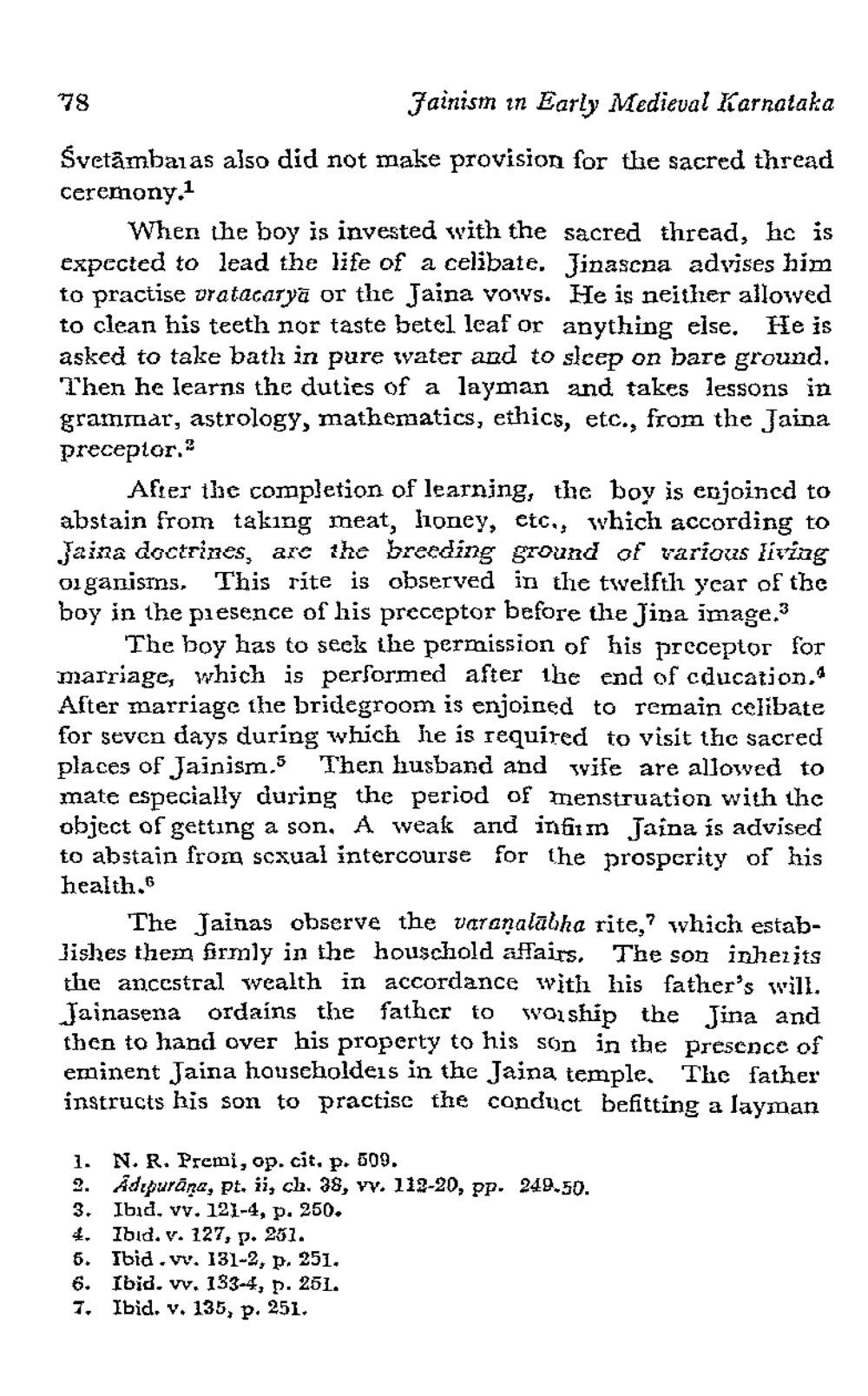________________
Jainism in Early Medieval Karnataka
Svetämbaias also did not make provision for the sacred thread ceremony.1
When the boy is invested with the sacred thread, he is expected to lead the life of a celibate, Jinasena advises him to practise vratacarya or the Jaina vows. He is neither allowed to clean his teeth nor taste betel leaf or anything else. He is asked to take bath in pure water and to slcep on bare ground. Then he learns the duties of a layman and takes lessons in grammar, astrology, mathematics, ethics, etc., from the Jaina preceptor.?
After the completion of learning, the boy is enjoined to abstain from taking meat, lioney, etc., which according to Jaina doctrines, are the breeding ground of various liviag Oi ganisms. This rite is observed in the twelfth year of the boy in the presence of his preceptor before the Jina image.3
The boy has to seek the permission of his preceptor for marriage, which is performed after the end of cducation, After marriage the bridegroom is enjoined to remain celibate for seven days during which he is required to visit thc sacred places of Jainism. Then husband and wife are allowed to mate especially during the period of menstruation with the object of getting a son. A weak and infiim Jaina is advised to abstain from scxual intercourse for the prosperity of his health.
The Jainas observe the varanalabha rite,? which establishes them firmly in the household affairs. The son inherits the ancestral wealth in accordance with his father's will. Jainasena ordains the father to woiship the Jina and then to hand over his property to his son in the presence of eminent Jaina householdeis in the Jaina temple. The father instructs his son to practise the conduct befitting a layman
1. N. R. Premi, op. cit. p. 509. 2. Adipurāna, pt. i, ch, 38, v. 112-20, pp. 249.50. 3. Ibid, vv. 121-4, p. 250. 4. Ibid. v. 127, p. 257. 5. Ibid.vv. 131-2, p. 251. 6. Ibid. v. 133-4, p. 251. 7, Ibid. v. 135, p. 251.




